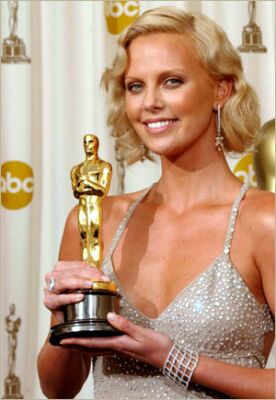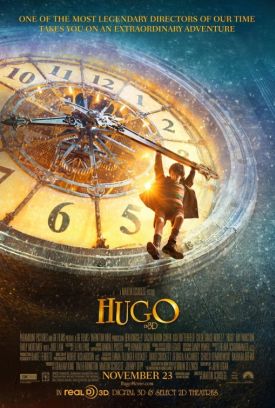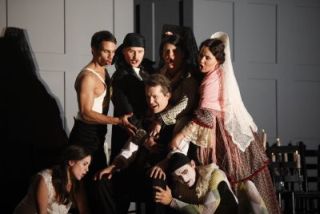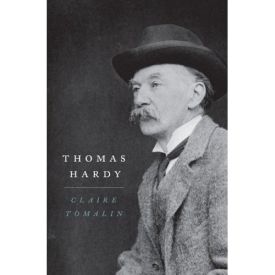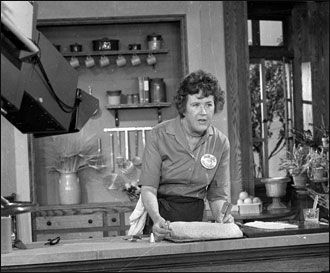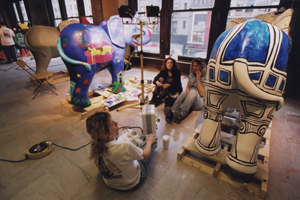Unisex at the Multiplex
From The American SpectatorAt the end of last year, Elvis Mitchell, writing in The New York Times, found it “dismaying” that only two women had ever been nominated for an Oscar as Best Director — and that neither had won. A month earlier, the Times had run an article by Felicia R. Lee about a study purporting “to document more precisely the ways TV warps reality [sic] and ducks nuance.”
This romp through the decades, which is continuing, found that in the post-Lucy years, female characters did get divorced, work, stay single and have babies on their own. But the study, which researchers say is one of the first to examine such issues over a long period, also found — not surprisingly — that the comedies still mostly define women by their relationships and not by what they do for a living.
The assumption behind both these articles seems to be that discrepancies between the performance or the portrayal of men and women must be the result of a deviation, caused by discrimination, from a notional sexual equality that they are pleased to call “reality.”
But what if women are just less good than men at producing the particular kind of pretentious, politically correct rubbish — like last year’s The Hours or this year’s Mystic River — that most often garners Best Director nominations? Wouldn’t that be something for women to be proud of? And what if, rather than “warping” reality, TV in this instance (if in no other) actually reflects it — since most people, women as well as men, share TV’s tendency to “define” women in terms of relationships rather than occupations? Call them “sexists” if you like, but at the least, it must be admitted that “reality” here is a problematical concept. The reality of Mr Mitchell or of Miss Lee is that of the cultural élite whose commitment to a unisex ideal is ideologically motivated.
If so, it seems no less real to them for that. Moreover, they are more accustomed than the rest of us to living in movie-reality, which diverged from real-reality a long time ago. In movie-reality, for example, women are assumed to be the equals to or superiors of men even in such traditional male activities as fighting — which explains why, as I noticed in this space a couple of months ago, a movie like Quentin Tarantino’s Kill Bill would be inconceivable apart from the movie-reality it is wedded to. It’s not, that is, as if Tarantino doesn’t know that to show a slightly built woman slaughtering dozens of armed men at once with her little samurai sword is to represent something unreal to the point of absurdity. But this is just his way of showing and glorying in the fact that his reality is only movie-reality and not that of the world outside the darkened Multiplex.
Knowing that it’s not true, he can embrace with all the more enthusiasm the delicious freedom the movies give him to pretend that it is true. Why should he care if such a fantasy is adaptable for propaganda purposes, or teaches us a false view of the world? In movie-reality you get to pick what world you want to live in. Even those who are not ideologically motivated may enjoy living in Tarantino’s world, where women are as strong as men and as skilled fighters as men and that there is no presumptive reason to expect the former not to win in any fight or physical contest with the latter. Everybody knows this is not true but everybody likes pretending that it is — women to indulge power fantasies and men to indulge sexual fantasies of involving the juxtaposition of sex and danger, which has always been a turn-on for them.
The result is that there is a tacit agreement on all sides to live in the fantasy world of movie-reality while pretending that it is as good as real reality. Thus real-reality begins to take on the quality of movie-reality which is what allows Patty Jenkins in Monster, her movie about the life of the female serial-killer Aileen Wuornos, to raise her subject to the level of heroine. This is presumably not because Ms Jenkins would be otherwise disposed to indulgence towards a multiple-murderer, but just because all other moral considerations must give way, among a significant proportion of the American movie-audience today, to those which affirm the movie-reality, otherwise known as fantasy.
Given, as Patty Jenkins’s film insists, that Miss Wuornos had no choice but to stalk the Interstates of Florida, offering men sex for money and then shooting them, why should our feelings about her not be of sympathy for her sufferings, rather than those of her victims, and of admiration for the girlish pluck with which she embraced her destiny? She has more than a little in common with Uma Thurman’s character in Kill Bill, or with Lara Croft, Tomb Raider — who, according to one of her journalistic admirers, is a woman who “doesn’t mess around. She’s tough. She’s gorgeous. She knows how to use her body and her firepower. She shoots, she kicks, she even head-butts! She is indestructible.” Even where “the new version of the female action hero,” proves less than indestructible — as Aileen Wuornos did when she was executed by the State of Florida in October of 2002 — her victimhood becomes a symbol of her defiance of oppression. But if real, non-movie reality will still occasionally creep in our day-to-day lives, if women will still be defined by relationships and still fail to win Best Director awards, it is becoming ever more difficult for the movies themselves to reflect anything but movie-reality. And when they do it must be by stealth. That is what has happened with this month’s Movie of the Month, P.J. Hogan’s Peter Pan. Partly because the story is already so well known and has long since ceased to be taken seriously and partly because Hogan (Muriel’s Wedding) manages to be subtle about his return to something more like the original sense of J.M. Barrie’s play and novel, it has not been widely recognized just how reactionary is this version of the tale of the boy who wouldn’t grow up.
For a start, Peter Pan himself is no longer the hero. Though very engagingly (and originally) played by a real boy, Jeremy Sumpter, he is as Barrie meant him to be a sad figure left behind by life itself. “All children, except one, grow up,” the novel begins, and so puts us on notice that our concern is to be more with the “all” than the “one.” That is Hogan’s course too, and Wendy (Rachel Hurd-Wood) thus re-assumes her rightful place at the story’s center. It is her wish to be a boy, rather than Peter’s, which is under scrutiny here, and her realization that this is impossible rather than his insistence that it is not. We also realize that refusing to grow up is an option for boys in a way that it is not for girls — and that girls grow up is what eventually makes boys grow up too, as John and Michael and the Lost Boys finally see they must.
What could be more subversive in the unisex world of movie-reality? Like Tarantino, Hogan embraces the unreal elements in his story — the fairies, the pirates, the ticking crocodile and the flying children — so that at first glance it appears he is doing the same kind of thing and glorying in his mere movie-ness. But to those with eyes to see he is doing something quite different and much more interesting. He is using the contemporary idiom of movie-fantasy in order to shock us, for once, with an allegory of life as it really is. There are not many of the products of the movie-world of which that may be said.
Discover more from James Bowman
Subscribe to get the latest posts to your email.

